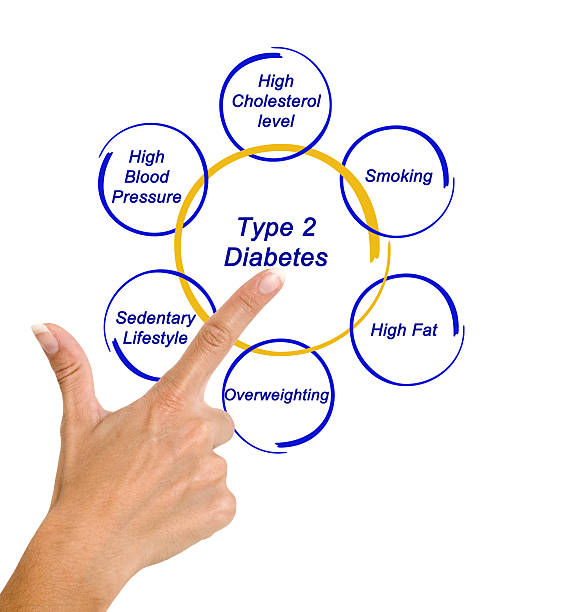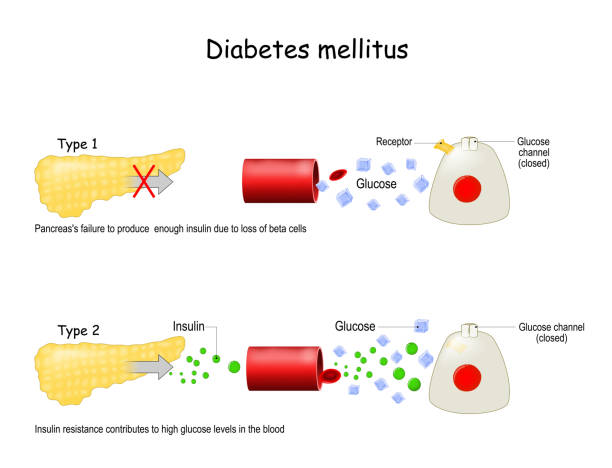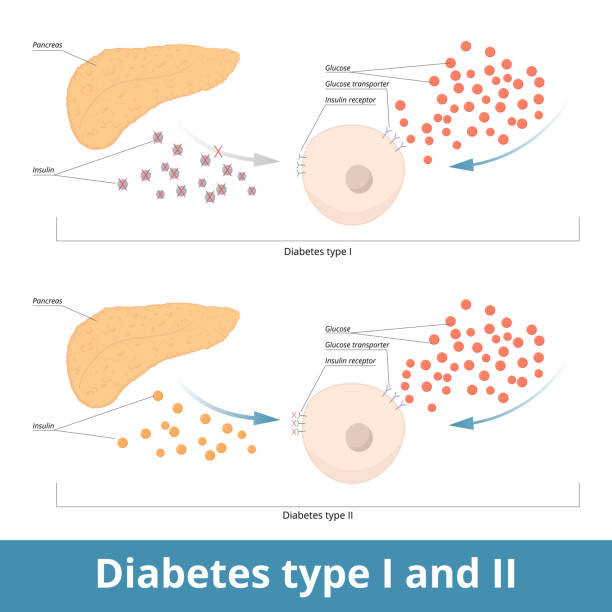Type 1 Vs. Type 2 Diabetes
Diabetes is an industrious contamination that impacts how the body processes glucose (glucose). Glucose is basic for energy, yet without real rule, it can incite significant ailments. The two fundamental kinds of diabetes are Type 1 and Type 2, each with remarkable causes, secondary effects, the leaders strategies, and anticipated burdens. Understanding the capabilities between these two sorts is huge for convincing finding and treatment.
Causes and Chance Factors
Type 1 Diabetes
Type 1 diabetes is a resistant framework issue. The body’s protected structure pursues the insulin-making beta cells in the pancreas, provoking basically no insulin creation. Insulin is basic for allowing glucose to enter cells and give energy. The particular justification behind this safe framework response is foggy, but innate factors and normal triggers, as viral infections, may expect a section.
Risk factors for Type 1 diabetes include:
- Family heritage: A person with a parent or family with Type 1 diabetes has a hardly extended risk.
- Geography: Higher rates are found in countries farther from the equator.
- Age: It can make at anything that stage throughout everyday life anyway is more ordinary in children and youngsters.
Type 2 Diabetes
Type 2 diabetes is essentially achieved by insulin resistance, where the body’s telephones don’t reply true to form to insulin, joined with lacking insulin creation long term. Lifestyle factors like weight, genuine idleness, and not exactly heavenly eating routine expect a tremendous part in its new development. Inherited tendency in like manner contributes.
Risk factors for Type 2 diabetes include:
- Age: Chance additions with age, particularly after 45.
- Weight: Being overweight is a huge bet factor.
- Family lineage: A family foundation of Type 2 diabetes increases risk.
- Dormant lifestyle: Nonappearance of dynamic work adds to weight gain and insulin deterrent.
- Identity: Certain ethnic social occasions, similar to African Americans, Hispanics, and Asian Americans, have a higher bet.
Symptoms
Type 1 Diabetes
Side effects of Type 1 diabetes frequently show up unexpectedly and can be serious.
- Extended thirst and progressive pee
- Incidental weight decrease
- Over the top longing
- Exhaustion and inadequacy
- Darkened vision
- Bad temper or attitude changes
Type 2 Diabetes

Results of Type 2 diabetes will commonly encourage even more step by step and may be less conspicuous, regularly going unseen for a seriously lengthy timespan. They include:
- Extended thirst and unending pee
- Weariness
- Darkened vision
- Slow-retouching wounds or customary illnesses
- Deadness or shuddering in the hands or feet
Diagnosis
Both Type 1 and Type 2 diabetes are diagnosed using similar tests:
- Fasting Blood Glucose Test: Measures glucose after a transient speedy.
- Oral Glucose Flexibility Test (OGTT): Marks glucose while finishing a sweet refreshment.
- A1C Test: Gives a run of the mill glucose level over the past a couple of months.
Regardless, perceiving Type 1 and Type 2 diabetes can incorporate additional tests to measure insulin levels or recognize autoantibodies normal for Type 1 diabetes.
**Management and Treatment
Type 1 Diabetes
Management of Type 1 diabetes focuses on insulin therapy to replace the missing hormone. Treatment involves:
- Insulin Therapy: Passed on through implantations or an insulin siphon.
- Glucose Monitoring: Normal checking of blood glucose levels to stay aware of control.
- Diet and Exercise: A fair eating routine and standard dynamic work help with supervising glucose levels and by and large prosperity.
Type 2 Diabetes
The leading body of Type 2 diabetes much of the time begins with lifestyle changes and may progress to medication or insulin treatment:
- Lifestyle Modifications: Great eating fewer carbs, weight decrease, and extended dynamic work are basic.
- Oral Medications: These help with additional creating insulin mindfulness or decrease glucose creation in the liver.
- Insulin Therapy: Used if glucose control isn’t achieved with various prescriptions.
- Monitoring: Standard glucose checks are principal to thwart ensnarement’s.
Complications
Both Sort 1 and Type 2 diabetes can incite outrageous intricacies while maybe not particularly made due:
- Cardiovascular Disease: Extended peril of respiratory disappointment, stroke, and other heart-related conditions.
- Neuropathy: Nerve hurt, particularly in the cutoff points, causing torture or loss of sensation.
- Nephropathy: Kidney hurt that can incite kidney dissatisfaction.
- Retinopathy: Eye hurt that can cause visual inadequacy.
- Foot Problems: Sad stream and nerve damage can incite defilements and evacuations.
Prevention
Type 1 Diabetes
There is correct now no known strategy for thwarting Kind 1 diabetes, as it is a resistant framework condition. Research is advancing to sort out the triggers and cultivate preventive philosophies.
Type 2 Diabetes

Type 2 diabetes can habitually be hindered or deferred through lifestyle changes:
- Sound Diet: An eating routine well off in normal items, vegetables, whole grains, and lean proteins can help with keeping a strong weight and reduction the bet of diabetes.
- Ordinary Exercise: Real work coordinates glucose and keep a sound weight.
- Weight Management: Losing excess weight diminishes the bet of insulin block and diabetes.
- Standard Screening: Those at high bet can benefit from early screening and mediation.
Psychosocial Impact
Living with diabetes, particularly Type 1, requires consistent organization and can impact mental wellbeing. Individuals with diabetes are at a higher bet of anxiety, misery, and stress due to the solicitations of the infection. Support from clinical benefits providers, family, and mind gatherings can help individuals with adjusting to these hardships.
Current Research and Advances
Research in diabetes is focused on improving treatment options and finding a cure. Some promising areas include:
- Counterfeit Pancreas: Systems that modernize insulin transport considering constant glucose checking.
- Undifferentiated creature Therapy: Investigating approaches to recuperating insulin-conveying cells.
- New Medications: Making drugs that attention on the major instruments of insulin resistance and beta-cell brokenness.
- Innate Studies: Recognizing inherited components to encourage modified drugs.

Conclusion
Understanding the qualifications between Type 1 and Type 2 diabetes is essential for end, treatment, and the leaders. Type 1 diabetes is a resistant framework condition requiring well established insulin treatment, while Type 2 diabetes is a large part of the time associated with lifestyle factors and can now and again be regulated through lifestyle changes alone. The two sorts require consistent organization to prevent burdens and assurance a nice individual fulfilment. As assessment propels, there is potential for better meds and perhaps an answer for the two sorts of diabetes.